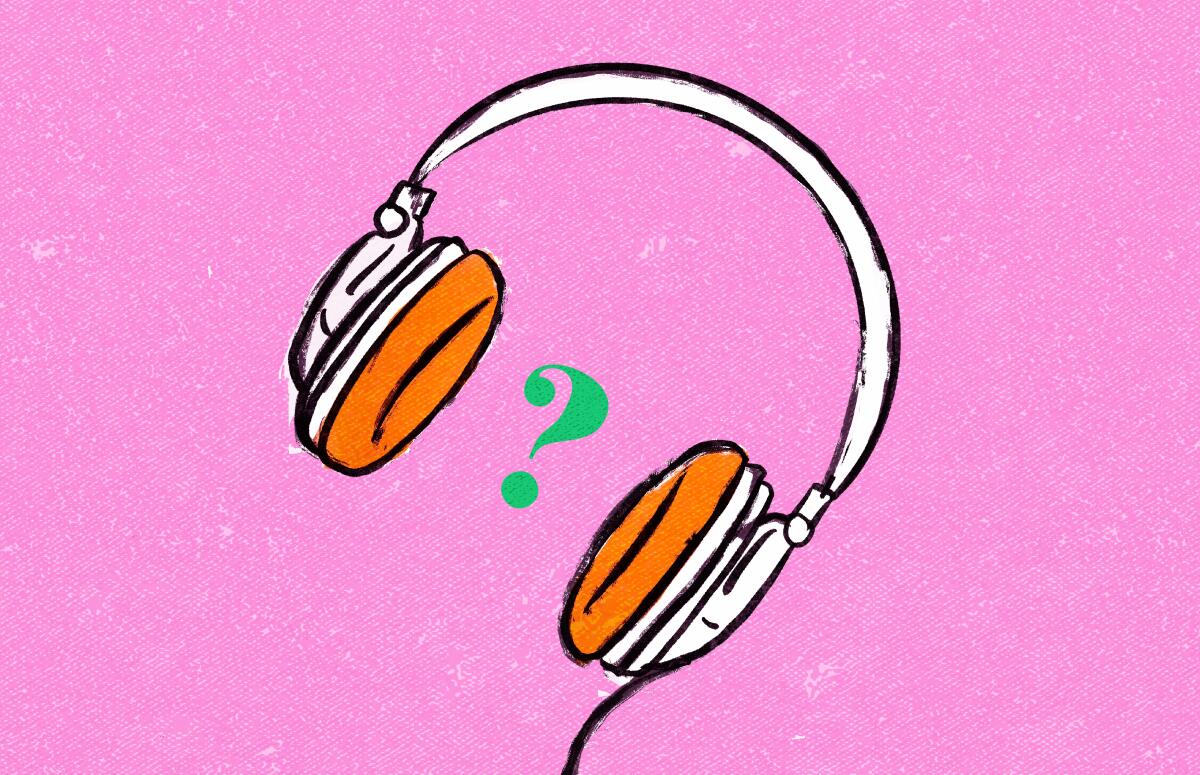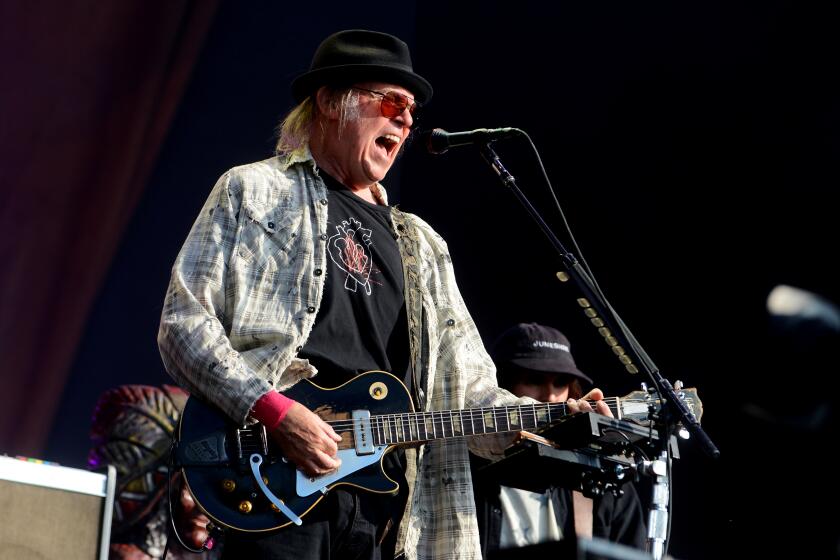Thinking of ditching Spotify? Here’s a user’s guide to the wide world of music streamers

- Share via
Neil Young probably will not be able to singlehandedly sink the Swedish streaming leviathan Spotify. But after the singer-songwriter pulled his entire catalog of music from the service this week, in response to top Spotify podcaster Joe Rogan’s repeated airing of vaccine misinformation, you might be following Young’s lead and looking into other options for music streaming. “They can have Rogan or Young. Not both,” the singer wrote in a (now deleted) open letter.
So where do you go if you want a comprehensive streaming service but need “Tonight’s the Night” in your ears and Jordan Peterson out of them?
Young is no stranger to taking on powerful interests, whether it’s music gatekeepers, soft-drink companies or his own record label.
Spotify is hard to quit. With 172 million global subscribers, Spotify controls 31% of the worldwide streaming market, and it’s the music industry’s bellwether for hits (Apple Music has only half its market share). Many users are locked into favorite playlists and libraries that would be a pain to rebuild elsewhere, and while Spotify exclusive podcasts like Rogan’s are controversial, they reach audiences in the tens of millions.
But whether you’re Team Neil or are simply looking for a service that better meets your listening needs (like ultra-high sound quality), there are other compelling choices.
Apple Music
$4.99-$14.99 per month
The other major player in the music streaming duopoly, Apple Music’s catalog is as comprehensive as Spotify but takes a more curatorial and star-driven approach to its radio stations (like Frank Ocean’s “Blonded Radio” or Elton John’s “Rocket Hour”). It hosts one-off events like Kanye West’s “Donda” listening party, and gets lots of first cracks at album premieres on Zane Lowe’s show. The standard plan included lossless streaming quality and some new Dolby Atmos spatial audio options, and you can merge your previously downloaded tracks into the app.
Amazon Music
$7.99-$9.99
If you’re looking to throw off the yoke of morally conflicted corporate music streaming companies, you probably won’t end up here, contributing to Jeff Bezos’ next spaceflight. But if you’re already in the Prime ecosystem, Amazon is an affordable and comprehensive option that sometimes lands music exclusives (like Kanye West and Drake’s “Free Larry Hoover” live show).
Tidal
Free-$19.99
Tidal didn’t dominate in the way that Jay Z hoped when he launched the service in 2015 surrounded by famous pals. While initially known as the frustratingly exclusive place to first hear Beyoncé’s “Lemonade” and Kanye West’s “The Life of Pablo,” it’s now owned by Jack Dorsey’s Block, and has pivoted away from celebrity exclusives to higher-quality (and higher-priced) audio. There’s a free tier as well but, to Tidal’s credit, it pays more in per-stream royalties to artists than almost any other service.
YouTube Music
$4.99-$14.99
While YouTube promised to scrub anti-vax-conspiracy content from its platform, it may not be the service for Spotify refuseniks. But YouTube Music Premium is affordable and comprehensive, and like Apple allows you to import your own previously downloaded music library into the app. If you spend a lot of time skulking around YouTube anyway, you get ad-free videos there as well.
SoundCloud
Free-$9.99
Few streamers can claim to be a shorthand for an entire era of 2010s hip-hop. But the popular upload platform took years to figure out how to make its outlaw remix and mixtape culture into a stable paid service. Now its top paid tier gets you the whole library of higher-res formal releases, along with the DJ mixes that made its reputation and an ability to slot songs directly into mixing software.
Bandcamp
Price varies
The download-centric platform became a lifeline for underground acts during the early days of the pandemic, waiving its fees on “Bandcamp Fridays” to steer income to struggling acts. You won’t find dominant pop hitmakers like Drake and Dua Lipa here, and it doesn’t offer an all-inclusive streaming service. But Bandcamp is the most direct way to point your streaming dollars to artists who make a pittance from Spotify. The app saves all your tracks in one portable place, and you can buy merch and pay to subscribe to many individual artist catalogs. For fans of more experimental and adventurous music, the curatorial suggestions are thoughtful and rewarding.
Qobuz
$12.99-$15
This French streaming service has been around since 2007 but recently found a niche with a huge catalog of ultra-high-quality sound (either in streaming or downloadable in a range of formats). The baseline sound quality for its 70-million-song catalog is a step up from Apple or Spotify, and if you have decent headphones or a home stereo to warrant the hi-res tier upgrade, the difference is palpable — sometimes better than CD-quality. Qobuz lacks Spotify’s uncanny suggestion algorithm, but staff-curated playlists highlight discoveries that warrant the close attention to detail.
Resonate
Price varies
This upstart co-op takes a contrarian approach to streaming economics — you pay a la carte per listen up to the price of a song’s download fee, then you own the track. By Resonate’s math, that’s about nine plays per song. The catalog so far is relatively limited to underground and emerging acts, but it’s a compelling model for music discovery that pays more sustainably than the big services, with lower upfront costs than a Bandcamp binge.
Neil Young Archives
$19.99 per year
For Neil Young completists, there is nowhere else to go to hear every last shred of his decades of canonical folk rock. Young caught some grief for pushing the $400, ultra-high-res yet Toblerone-styled Pono player and download service back in 2015. But he was right on the ethics — the big streamers have generally made life miserable for working artists who depend on small-scale record sales. There’s probably a hard limit to the number of artists who can make a catalog-dedicated service worth either their or your while. But if you want to take a side in the Spotify debate, or just get sonically uncompromising access to one of rock’s greatest catalogs for the cost of a monthly gas-station coffee, the 76-year-old tech visionary has you covered.
More to Read
The biggest entertainment stories
Get our big stories about Hollywood, film, television, music, arts, culture and more right in your inbox as soon as they publish.
You may occasionally receive promotional content from the Los Angeles Times.












